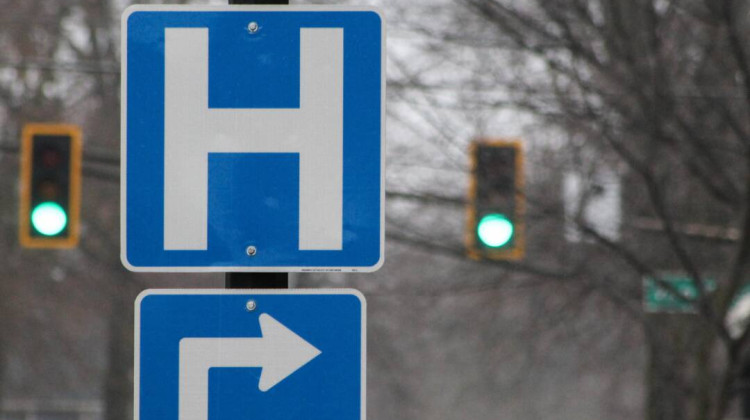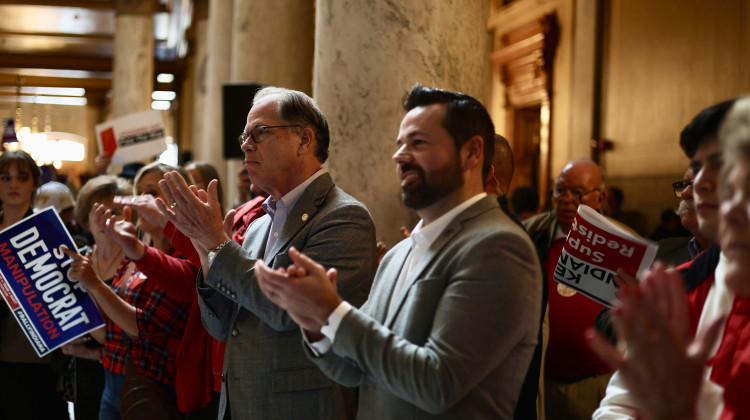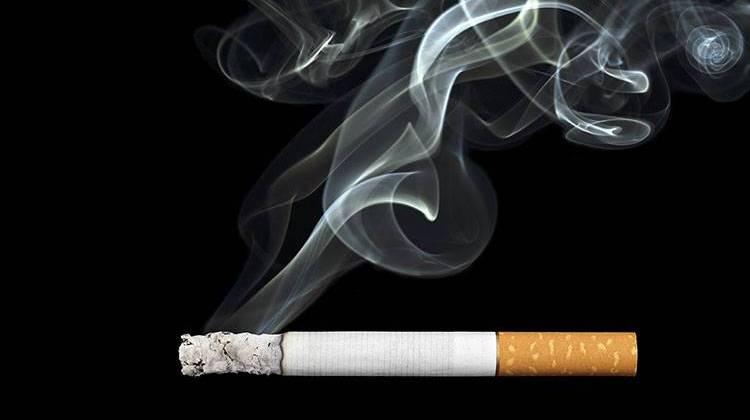
Hospitals across the Midwest are bracing for cuts to services and staff in the wake of funding changes created in President Donald Trump's budget bill.
FILE Photo: Abigail Ruhman / IPB NewsHospital officials are warning that changes passed in President Donald Trump's budget and tax bill put them on an unsustainable track that could lead to closures or loss of services in rural communities.
The warnings come as smaller, rural hospitals are already under immense strain. A report released earlier this year by the Center for Healthcare Quality and Payment Reform found that over 700 rural hospitals across the country are at risk of closure. In the Midwest, that number is over 200.
Of particular concern are changes to Medicaid eligibility requirements that are expected to cut millions of Americans from the program. Hospitals say they will pick up the tab for care provided to people without coverage — until hospitals can no longer afford to.
Other changes, including to the complex tax systems states use to help bolster Medicaid funding to hospitals, are also expected to cut into hospital bottom lines.
Scott B. Tittle, president of the Indiana Hospital Association, said the financial strain that many hospitals, especially those in rural communities, have been feeling "will only be exacerbated by these drastic cuts to Medicaid", and that they would be felt by all patients regardless of their health insurance coverage if hospitals close or curtail their services.
Altogether, the changes would lead to a reduction in health care spending in Indiana by nearly $31 billion — roughly $13 billion of that associated with state hospitals — over the next decade, according to data from the Urban Institute.
Indiana Gov. Mike Braun said that the state is still evaluating the impact of the bill on its Medicaid program. The Governor did not directly address concerns about how cuts could impact hospital services in rural areas.
Other Midwestern states are also projected to see billions of dollars slashed off health care spending that will impact hospitals over the next decade. Illinois hospitals are projected to see a $9 billion reduction in health care spending, Ohio a nearly $10 billion reduction, and Iowa will see a $2 billion reduction.
In Ohio, state lawmakers identified 11 hospitals "at risk" of financial distress or closure specifically because of the Trump cuts.
"If you're a hospital right now that is struggling, there's no relief in sight," said David Dunkle, the CEO of Johnson Memorial Health in Franklin, Ind.
When reached for comment about the cuts, a Centers for Medicare and Medicaid Services spokesperson pointed to the Rural Health Transformation Program in the Trump tax bill, arguing it would “strengthen health infrastructure.”
The program includes $50 billion from the federal government to states over five years starting in 2026.
“The law… supports improving the sustainability of rural healthcare access points and improving recruitment and retention of a strong healthcare workforce to rural areas,” the CMS spokesperson said.
Health advocates and rural health care leaders say the program presents a welcome investment that they hope would go to rural providers, but others say they are unsure how those funds will be used, and note it won’t be enough to cover the losses from cuts to Medicaid.
Medicaid changes could lead to a loss of services
Medicaid work requirements in the budget bill will take effect before the end of 2026. People will have to prove that they work, volunteer, or go to school for a certain number of hours in order to qualify for the program. The work requirements are expected to cut a million people in the Midwest off of Medicaid. Some of these people may lose coverage even if they still qualify for Medicaid due to procedural errors when documenting their compliance and work status or verifying their exemption.
For hospitals that serve a large number of patients who are on Medicaid, those changes are likely to mean reductions in compensation and, ultimately, cuts to services or staff.
"What's going to happen is those [uninsured] patients are still going to come in and we're going to treat them like they're any other payer," Rob McLin, CEO of Good Samaritan Hospital in Vincennes, Ind., said. "At the end of the day, we're not going to get paid to cover the cost of those that we take care of on a daily basis."
Good Samaritan Hospital currently operates on a 72% government payer mix, meaning the majority of its patients are covered by either Medicare or Medicaid. But some services in the hospital are disproportionately covered by Medicaid.
In Good Samaritan's case, over half of its deliveries are covered through Medicaid. If less people are covered, the service is likely to become unsustainable.
"We just won't have the reimbursement methods to be able to cover the costs associated with those pretty high-end, very low reimbursed areas," McLin said.
That means that for certain types of care, including birthing, residents in Good Samaritan's 11-county service area may have to drive elsewhere for services.
"Can you imagine a mom in labor having to drive an hour to get to a larger system to be able to have their child?" McLin asked. "That doesn't seem right to me."
He said in the wake of the bill's passage, he's hopeful that cooler heads will prevail in the interim period before some of its measures take effect.
"We have these couple of years to actually look at what the implications are, and I hope that people will listen and we'll actually see some changes that will result in just reasonable reimbursement for Medicaid," he said.
Lower provider taxes mean reductions in health care spending
Another change made by Trump's budget bill will reduce how much states can tax hospitals over time, through what's called a "provider tax."
According to KFF, every state, with the exception of Alaska, has some kind of provider tax on the books.
Because the federal government matches what states pay into their Medicaid programs, the tax on state hospitals increases the amount that each state is able to claim in matched funding from the federal government. That's then fed back into those same hospitals through the state Medicaid programs.
Hospital officials say that the tax system means that every $1 hospitals pay in the tax results in $3 that comes back to the hospitals.
On average, Indiana providers are reimbursed 57 cents on the dollar for Medicaid services, according to hospital officials. Without provider taxes, they say that number would fall to less than 30 cents on the dollar.
Starting in 2028, the federal government will begin decreasing how high those provider taxes can be, bringing them to a flat rate of 3.5% in 2032.
In Indiana, those taxes will drop from between 4.5-6% currently to 3.5% in 2032. The Indiana Hospital Association says the tax reduction will result in a $2 billion loss each year.
"That's less money coming to Indiana," said Dunkle, with Johnson Memorial Health. "That's what that results in. Being asked to do more with less."
Like other hospital leaders, Dunkle said he's worried about the long-term stability of smaller hospitals and services in the wake of these changes. Margins for Johnson Memorial, which has a roughly 70% government payer mix, were already tight.
Even before some of the federal changes, small, rural hospitals were in need of a higher level of reimbursement for the care they provided, Dunkle said. The changes will only exacerbate existing disparities.
"I think it's scary for the most needy, and I think it's scary for those in rural communities," he said.
This story has been updated on Tuesday, July 22, 2025 at 10:41 a.m. ET to reflect comments from Indiana Gov. Mike Braun and the Centers for Medicare and Medicaid Services.
Contact Health Reporter Benjamin Thorp at bthorp@wfyi.org.
Side Effects Public Media is a health reporting collaboration based at WFYI in Indianapolis. We partner with NPR stations across the Midwest and surrounding areas — including KBIA and KCUR in Missouri, Iowa Public Radio, Ideastream in Ohio and WFPL in Kentucky.
 DONATE
DONATE






 Support WFYI. We can't do it without you.
Support WFYI. We can't do it without you.